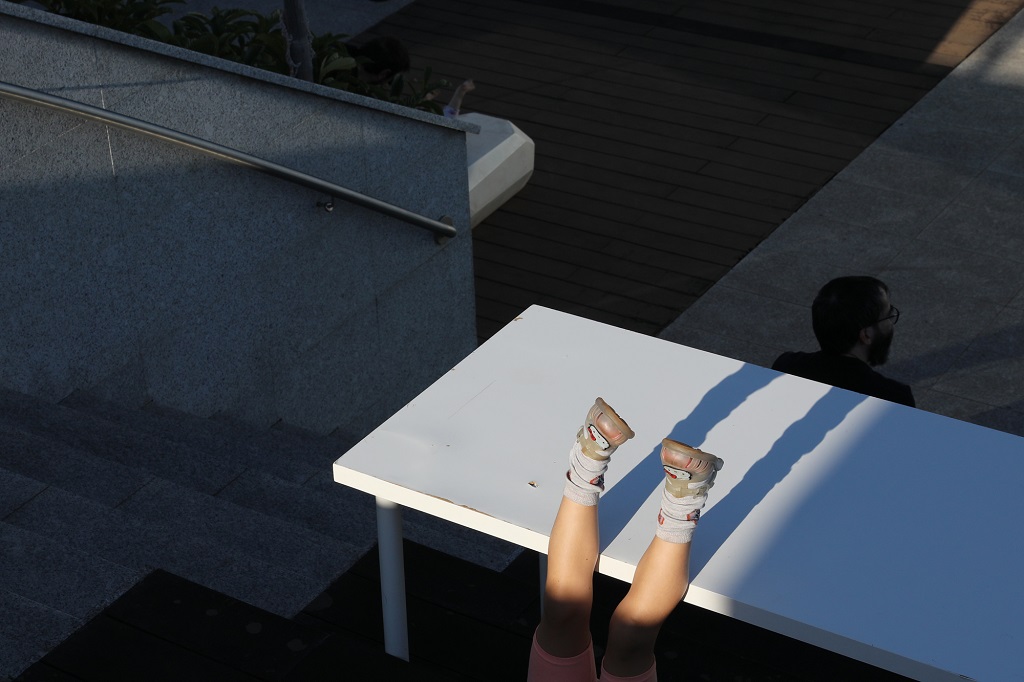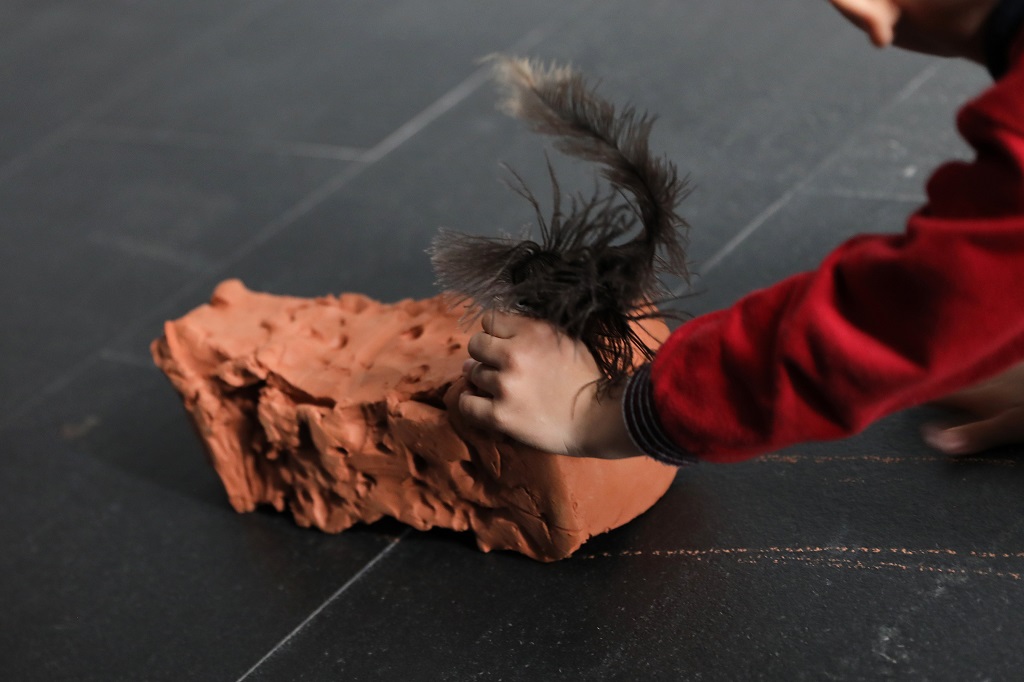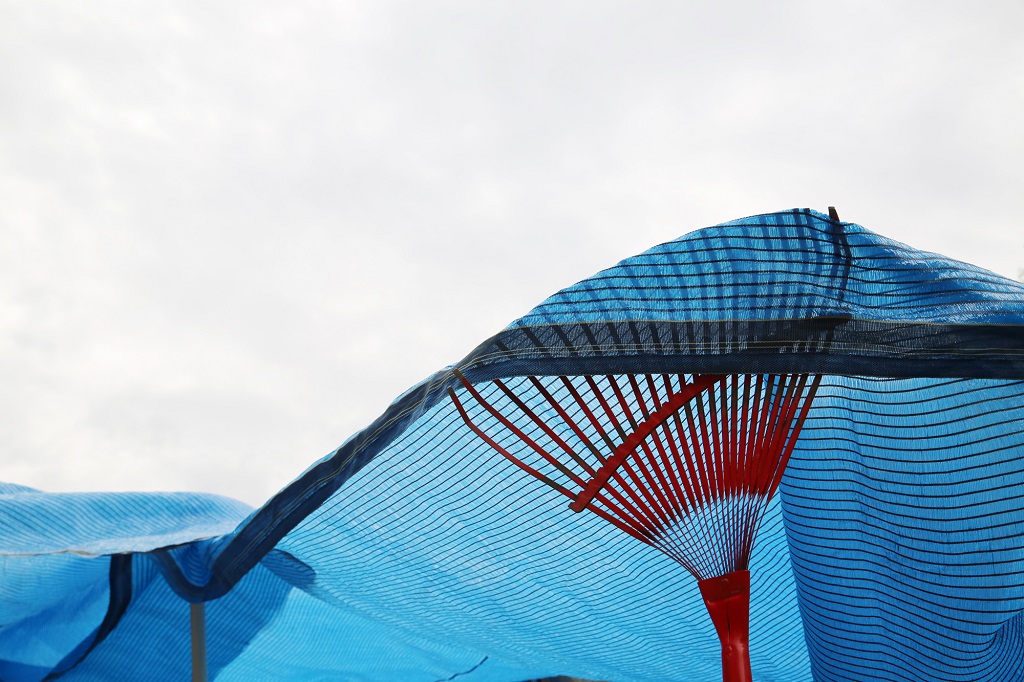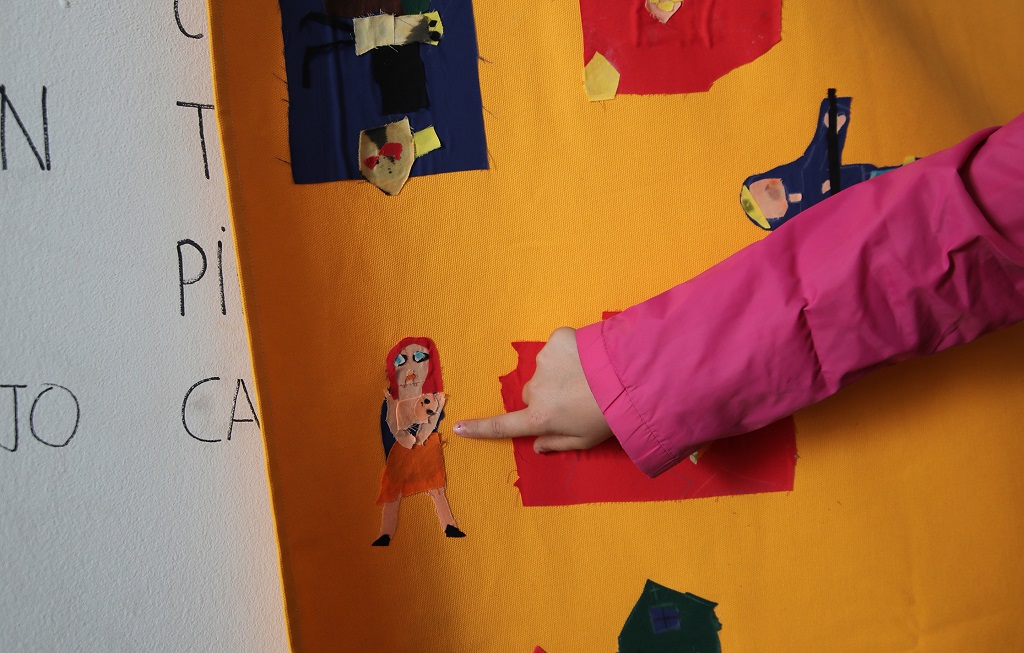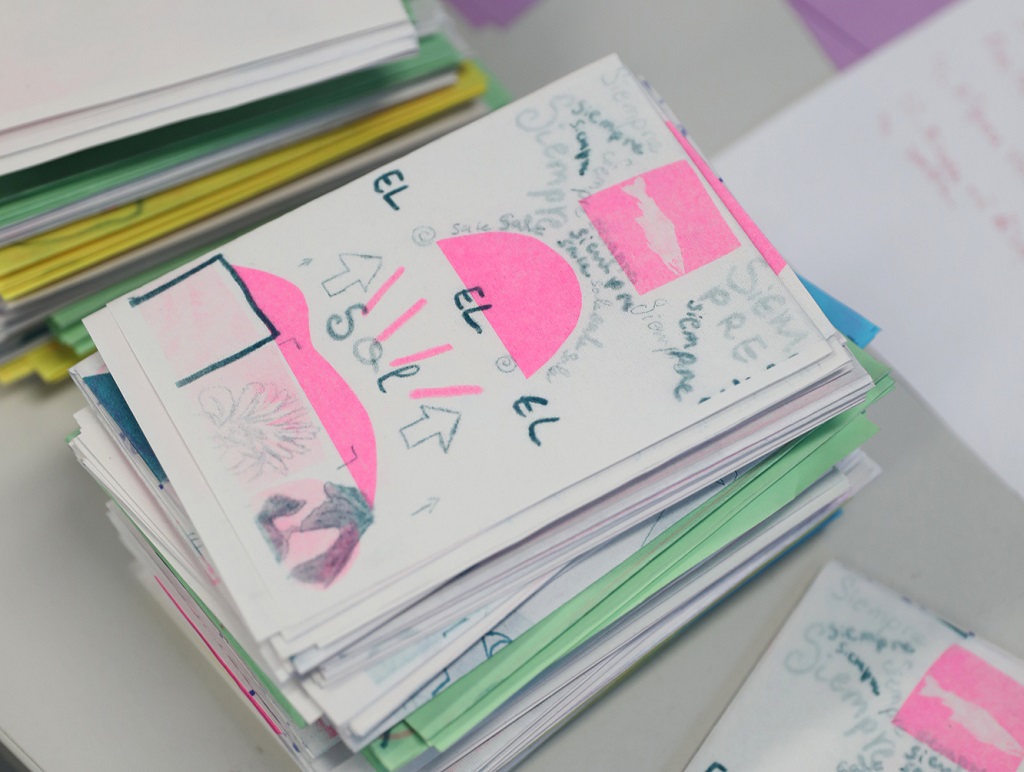We are suggesting a group tour through the museum’s exhibitions to discover what happens in each encounter. It is a collective experience open to all types of groups on Tuesday’ and Wednesday mornings. Every tour will be different, and we’ll design it as we go, generating unexpected dialogues.
We’ll explore two exhibitions on our tour. The first is Busy Looking for Soursops, the show by the Venezuelan artist Sol Calero, who invites us to immerse ourselves in her colourful world. Her work revolves around the concept of movement and the fact of being born in one place and inhabiting another.
Migrating and being a migrant is a condition that connects us with the 1502 Persons Facing the Wall, the exhibition by Santiago Sierra, who is known for his critical eye. His work is immersed in the social reality and conditions of production and reception, and he confronts us with what often remains hidden and silenced. The ‘radicality’ of his works challenges spectators to reflect and debate.
Targeted at groups, associations and organisations.
Free of charge. Register in advance by phoning 91 276 02 27 or emailing educacion.ca2m@madrid.org.
AFORO: 25 PERSONAS
We propose a group tour of the museum's exhibitions and discover what happens in each encounter. A collective experience, open to all kinds of groups on Tuesday and Wednesday mornings. Each tour will be different, and we will build it as we go along, generating unexpected dialogues.
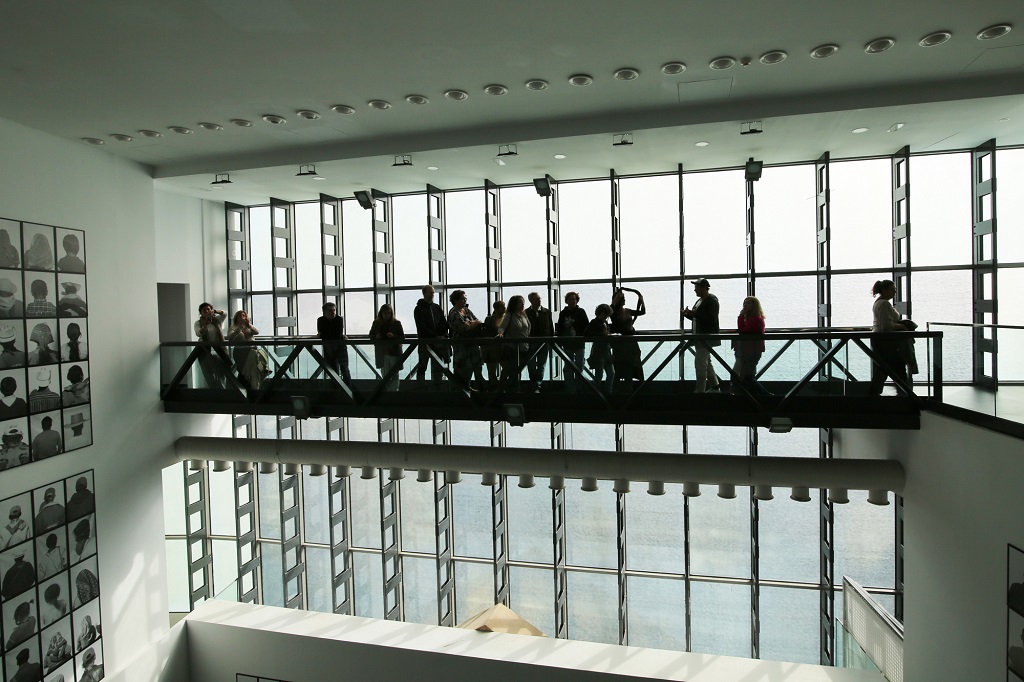
Picture: Sue Ponce.

